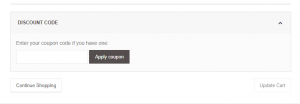Frequently Asked Questions
- Show All
- Contact Lens Questions
- Frequently Asked Questions
- Ordering From Eye Love Vue
- Prescription Queries
Are dry gritty eyes normal for contact lens wearers?
Some contact lens wearers do suffer with dry and gritty eyes. Environmental factors such as air conditioning and heating, the position you sit in and the amount of water you drink can also affect your eyes. It could also be the contact lenses you are wearing. For example, Focus Dailies All Day Comfort lenses should not be worn for more than 8 hours a day. However, Acuvue Trueye can be worn for up to 16 hours a day as they are made from silicone hydrogel which allows more oxygen to reach the eye. You can use artificial tear or eye drops as they are better known to help to rewet and moisturise the eye or you can talk to your optician about changing your lenses to suit your lifestyle.Are lenses for left and right eye specific for those eyes?
Yes, if you have different prescriptions in each eye. If you have the same prescription in both eyes it doesn't matter which lens goes in which eye. It is advisable to keep each lens to the same eye for hygiene purposes.Can contact lenses block UV light?
Yes some contact lenses can help to filter out damaging UVA and UVB light. Acuvue is the only brand where all its contact lenses have UV blocking technology. Other UV filtering lenses include: Avaira, Avaira Toric, Biomedics 55 Evolution, Biomedics Toric and everclear UV. If you are not sure whether your lenses include UV absorbing technology speak to your optician.Can I change my lens type from those specified on my prescription?
We would advise that you speak to your optician about changing the type of lenses you wear. However, our optician has put together a list of compatible and upgrade lenses for all contact lenses. So you can see what the compatible monthly or daily would be for your current lens and discuss this option with your optician.Can I sleep in my contact lenses?
Extended wear contact lenses are designed to be slept in. However, it is always best to consult with your optician to see whether extended wear lenses are compatible with your eyes.Can prescription lengths vary?
Prescription lengths vary depending on the lens type and wearing pattern. However, most will be valid for up to 2 years. We recommend visiting your eye doctor for an eye test every 2 years, although some people will be comfortable using the same lenses for longer. Always consult your eye doctor when you can no longer see comfortably at your current prescription.Can you lose a contact lens at the back of your eye?
Do not worry; it is impossible to lose a contact lens in the back of your eye. Sometimes the lens can become stuck under the eyelid but it can easily be dislodged by looking in the direction of the lens or rubbing the eyelid gently, otherwise your optician will be able to retrieve it for you by lifting your eyelid.How long can I wear my contact lenses?
When you receive your contact lens prescription from your optician, you should be informed of the wearing pattern compatible with your lenses. The most common contact lenses are disposed of daily, or cleaned and stored overnight for wear over a two-week or monthly time period. Some contact lenses are designed for extended wear; this means they can be worn continuously for a certain time period. It is not advisable to wear your contact lenses continuously without consulting your optician first as not everyone's eyes are compatible with extended wear lenses.How do I use a promotional code?
If you have a promotional discount code, please enter this on the basket page. Please note: If you use a promo code for new customers and you have ordered from us before, the discount will show in your basket. However, once you log in our system will remove the discount from your order.
What values do I enter in the prescription information fields?
On the product page for your contact lenses you will be asked to enter your prescription details.| From left to right the different specifications mean: | |
| Base Curve (BC): | The curvature of the lens in millimetres usually between 8.3 and 9.0. |
| Diameter (D): | The diameter of the contact lens. This number ranges from between 13.8 to 14.5. |
| Power (PWR/SPH): | Is a + or - figure followed by a number e.g. -4.50 or +0.25. This represents the level of visual correction needed, and whether your lenses correct long-sightedness (plus/+ powers) or short-sightedness (minus/- powers). For some contact lenses the power may also be 0.00, plano or displayed with this symbol ∞ which is for non-prescription use e.g. coloured contact lenses. |
| If you have astigmatism the following values will also be required: | |
| Cylinder (CYL): | A minus number that increases in a scale of 0.25 dioptres, ranging between -0.25 to -2.75. |
| Axis (AX): | A number between 0 and 180, that determines the direction needed to correct your astigmatism. |
| If you wear multifocal contact lenses the following values will also be required: | |
| Addition (ADD): | A + number between 0.50 and 3.00, or referred to as high, medium or low. This is an additional power that determines the level of correction needed for you to focus on near objects. |
| Dominant (D): | A choice between "D" and "N" to determine which is the dominant and the non-dominant eye. |

